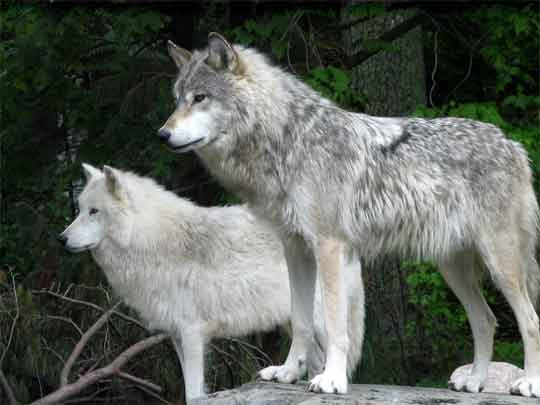

The color of a wolf's fur can vary, although gray is the most common color. Wolves may also have black, reddish or even white fur. In fact, the wolf has one of the widest ranges of color of any mammal in North America. During the winter, fur gets darker on the neck and rump. Wolf pups are born with fuzzy, dark hair. As they get older, their hair lightens. Old wolves have gray-white hair. The color helps to camouflage the wolf by allowing it to blend into its surroundings.
Wolves that live in dark wooded areas, often have dark fur. In places where the plants change colors throughout the year, the wolves that inhabit the area can have fur of many shades of color. Wolves have two kinds of hairs. There are the long, stiff hairs of the outer coat, called "guard hairs". Wolves also have an "undercoat" of soft fur which grows thick in the winter and helps to insulate its body from the cold. This hair is shed in the spring and summer in large sheets and chunks.
Wolves use their hair to communicate. By raising or flattening its hair, a wolf may signal aggression, anger or dominance. By holding its "hackles", or the hair on the back of its neck, stiff, for instance, a wolf signals aggression or dominance. The hair around the face can also puff out making the wolf's aggressive stare look even larger to a potential enemy.
The outer layer of hair lies in three "capes" on the wolf's back. These hairs grow in bundles and may be nearly five inches long. Water runs off a wolf's fur, keeping its underfur dry and warm. These layers of fur may be nearly two and a half inches thick and help keep a wolf warm even in temperatures reaching 40 degrees (F) below zero. (http://www3.cesa10.k12.wi.us/clustera/multimedia/altoona/solfest/
fur.htm)
